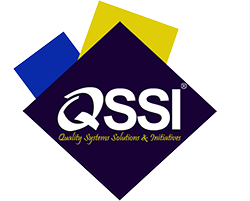Preparing for Certification
The road to certification of a Quality Management System can be as easy as A B C. However, depending on your organization’s culture and its resistance to change, the road may be one that is filled with many challenges and obstacles. Too often, top management makes the decision to implement and obtain certification of a company’s Quality Management System (QMS) without committing their time and the relevant resources that will be needed for a successful and timely implementation.
Top Management’s roll in a company going for certification of its QMS in a reasonable time cannot be over emphasized. Everyone in the organization takes their skew from those at the top. They are responsible for the motivation and cheering on of each department, the implementation team and staff. Top Management must also empower the team to get the work done and provide the necessary resources for the implementation process.
Successful certification requires the following steps:
- Know all about the Standard to which you wish to be certified
- Preparation of Team - staff, employees – training, communication, motivate and encourage
- Plan Implementation – form an implementation Team
- Document System
- Implement System
- Perform Internal Audit
- Prepare for the Certification
- Maintain the system and carry out continuous improvement
Know the Standard to which you wish to be certified: It is often said that “knowledge is power”. Everyone in the organization should be familiar with the requisite Standard to be implemented. The requirements for certification vary depending on the Standard, therefore it is often recommended that the organization works with a consultant who is very knowledgeable and who can help the organization to overcome mounting challenges that they may face. Another method of gaining knowledge on the chosen Standard is for the organization to conduct its own research, for example, using the World Wide Web; the internet can make this very easy.
The main reason for knowing your chosen Standard is to have a good understanding of the requirements, the various sections, to know the applicable elements for the various departments and to help Top Management make a determination as to the type of resources that are needed. Will the company be required to make changes in its physical structure? Will there be requirement for additional human resources? How costly will these changes be? Can the company afford it? Is Top Management willing to make the sacrifice of commitment?
Preparation of Team: This is the second important aspect of the road to certification. Before preparation of the entire Team can be done, one person should be chosen to lead this process; either an HACCP Coordinator for HACCP, an SQF Practitioner for Safe Quality Foods (SQF), or a Management Representative for ISO 9001.
The main responsibility of this person is to manage the entire implementation process. Therefore, this person should be very familiar with the company and its functions and should be given the appropriate authority to make the changes that would be required.
Successful preparation of the team requires training of all persons involved. The purpose of training is to help everyone to get a good understanding of the requisite Standard, their roles and functions, to ensure the success of implementation and the working of the system.
Training should be done in two tiers: training of top management and training of employees. Top Management’s training should inform them of the importance of the certification to the organization, their role in the provision of resources and the commitment that will be required of them. For the employees, they will be trained as to how the system will work, what will be required of them, the benefits of the system to the efficiency of the organization, their personal responsibilities and what they should expect from Top Management.
Plan Implementation: The first step in planning implementation is to compare the organization’s current system against the Standard to be implemented. The comparison is called a Gap Audit or Gap Analysis. This audit/analysis helps the organization to determine the things that are in place, and all that will be required to fulfill the Standard. From this audit/analysis a “To Do” list can be made.
On completion of the Gap Audit/Analysis, the implementation team is required to write a comprehensive plan. The Implementation Team headed by the HACCP Coordinator, SQF Practitioner or Management Representative should be comprised of members with various skills and abilities. The team should be a representation of the entire organization, inclusive of managers and employees. The rolls and responsibilities of each member must be clearly defined. The Implementation Team should meet regularly in order to monitor progress, to provide relevant communication and clarification, to provide allocation of resources and to ensure the overall coordination of the entire programme.
The next step for the Implementation Team is to make a time bound plan for certification, inclusive of dates and responsibilities of all team members. The time bound plan can be an effective tool to keep all on track and accountable for certification.
Document System: Every system requires documentation, be it manual or electronic. This stage can often be slow and tedious and often requires the assistance of a “subject matter expert”.
The importance of documentation cannot be overemphasized. Documentation provides proof that the system is implemented, it provides guidance to ensure consistency and conformation to the Standard. It also provides commitment and continuity.
The basic documentations required are Quality Policy, Quality Objectives, a Process Flow Map, Work Instructions, Procedures, Forms and the Scope of the Quality System. Every documented system requires control to be in place to show how policies, procedures and records are developed, approved, updated and revived. Note that all current revision of documents should be widely accessible in the organization where they are needed.
Implement System: Now that the plans are completed and documentation is well on its way, it is now time for the actual implementation to take place. This process requires the team to carefully follow its written plans and get all employees involved, as implementation will affect all. It is likely that as the system is being implemented, a greater understanding of the Standard is taking place which would lead changes.
The implementation process also requires the system to be reviewed regularly. These reviews are called Management Reviews. Every Standard stipulates that the input and output of the Management Review are used to improve the overall system.
Perform Internal Audits: A very important feature of the Quality System is the performance of internal audits which ensures that the system is meeting the stated requirements. Internal audits are carried out during implementation and after the system has been certified. Those who perform these audits must be trained and as the name suggests - “Internal Audit”, is carried out by members of the organization. Also, individuals are not allowed to audit his or her own work. Results from internal audits should be used to conduct improvement of the system and to make the necessary corrections when the system does not conform to the Standard.
Prepare for Certification: It is now time for certification/registration. Certification/Registration is carried out by an independent body, known as a Registrar. The Registrar must be accredited by a national or international body and an auditor will be assigned to audit the system. This auditor is external to your system and therefore is called the External Auditor who also must be qualified to audit your company’s system. The HACCP Coordinator/SQF Practitioner/Management Representative is usually the Company’s representative to liaison with the Registrar in planning the date for the audit and usually the one who will be assigned to take the auditor around the facility on the date(s) of the audit.
Before the arrival of an external auditor, all the employees as well as the facility/plant must be prepared for the audit. Employees’ preparation involves them knowing about the Standard and the purpose of the upcoming audit; they should have a good understanding of their role in the entire process and their impact on the success of the system. Readiness of the facility/plant involves ensuring that it is conforming to the necessary pre-requisites of the programme(s); the availability of all documentations inclusive of Quality Policy being displayed, as well as updated procedures and records correctly completed and properly signed. Should no major nonconformities be found, the company’s Quality System will be granted certification. Any discovery of areas not conforming, non-conformance(s) would be issued.
Management of the System: Certification is not the end. The system must be maintained, and this requires constant monitoring and reviewing. Management Review Meetings must be planned and held. At these meetings, the system processes along with objectives, customer’s requirements and complaints, employees’ feedback and test results, will all be reviewed and analyzed.
Another important feature of maintaining the system is to ensure that internal audits are planned and executed. Audits help with identifying problems, tracking the conformity of the system, and highlighting improvements and risks.
Depending on the system to which your company is registered, surveillance audits will be carried out by the Registrar. A surveillance audit may be done once per year for the lifecycle of the certification and therefore the company cannot afford to lose focus.
Lastly, customer feedback is also an important tool that can help with maintenance of the system. Through feedback received, the company is able to carry out improvements.
So now that you are certified, CONGRATULATIONS and keep up the great work. Using the above guide can help to organize and steer you to certification.
Written by: Patricia Thompson

